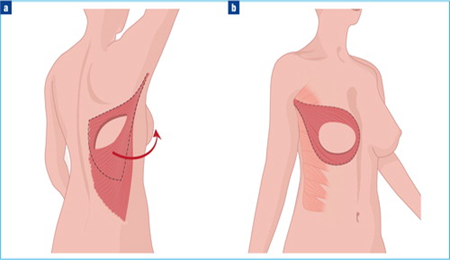Choosing Breast Reconstruction:Personalized Guide
Introduction

Breast reconstruction is a deeply personal and transformative journey for women who have undergone mastectomy or lumpectomy. It’s not just about physical restoration—it’s about reclaiming confidence, self-esteem, and a sense of normalcy. With advancements in medical science, breast reconstruction has become a safe and effective option. This guide will walk you through the basics, options, concerns, and expert insights.
Understanding Breast Reconstruction
Breast reconstruction is a surgical procedure to rebuild the shape and appearance of the breast after a mastectomy or lumpectomy. It can be performed either immediately or later, depending on the treatment plan. There are two main types:
- Implant-Based Reconstruction: Uses silicone or saline implants.
- Autologous (Flap) Reconstruction: Uses the patient’s own tissue, often from the abdomen, back, or thighs.
Each method has its pros and considerations, and the right choice depends on your body, health, and preferences.
Common Concerns and Emotional Considerations
- Will it look natural? Modern techniques aim for a natural look and symmetry.
- Is it safe? Reconstruction is generally safe, though all surgeries carry some risks.
- Recovery time? Implant-based recovery is usually shorter; flap reconstruction takes longer.
- Does it affect recurrence? No. Studies confirm it doesn't increase cancer recurrence risk.
Emotionally, the journey can be healing, but realistic expectations and support are key.
Exploring Your Options
1. Implant-Based ReconstructionPros: Less surgery time, quicker recovery. Cons: May need replacement, possible complications.
2. Autologous (Flap) ReconstructionPros: Natural look and feel. Cons: Longer recovery, additional scarring at the donor site.
3. Combination TechniquesBlends implants with natural tissue for optimal outcomes.
4. Nipple and Areola ReconstructionFinal step using surgical or tattooing techniques to recreate the nipple area.
Expert Tips for a Smooth Journey
- Research your options thoroughly.
- Select a board-certified plastic surgeon.
- Ask questions—don't hold back on your concerns.
- Prepare your recovery space and support system in advance.
- Seek counseling or join support groups if needed.
Meet Dr. Vinay Jacob
Dr. Vinay Jacob is a Senior Plastic and Reconstructive Surgeon with over 25 years of experience. He completed his MBBS from St. John’s Medical College, Bangalore, MS from Tata Memorial Hospital, and holds MCh and DNB in Plastic Surgery with distinction.
Dr. Jacob specializes in breast reconstruction, gender-affirming surgery, body contouring, limb salvage, nasal surgery, and prosthetic integration.
Clinic Address: 503, Sagar Fortune Building, Above A Kreations, Waterfield Road, Bandra (West), Mumbai - 400050
To book an appointment, call +91 90040 78509 or visit thereconstructivesurgeons.in.
FAQs on Breast Reconstruction
1. Is breast reconstruction covered by insurance?Often, yes. Most insurance providers cover it post-mastectomy. Check with your provider.
2. Can I undergo reconstruction years after mastectomy?Yes. Delayed reconstruction is a common choice.
3. Will I lose sensation in my reconstructed breast?Sensation may be reduced, but partial feeling can return over time.
4. How long do implants last?Implants typically last 10–15 years and may need replacement.
5. Can I breastfeed after reconstruction?Breastfeeding is usually not possible after certain types. Discuss this with your surgeon.
6. What if I don’t want reconstruction?That’s okay. Some women choose prosthetics or opt to go flat.
Conclusion
Breast reconstruction is a personal choice. With support, the right guidance, and expert care from surgeons like Dr. Vinay Jacob, you can reclaim your confidence and well-being. The right path is the one that feels right to you.

